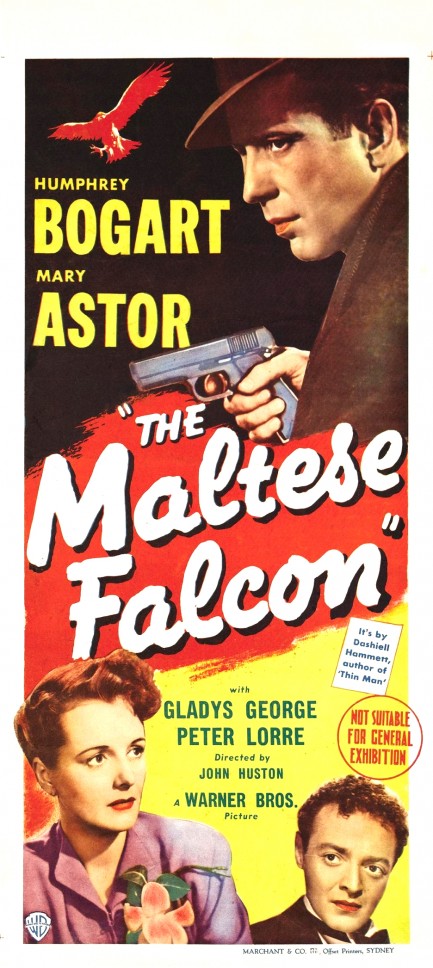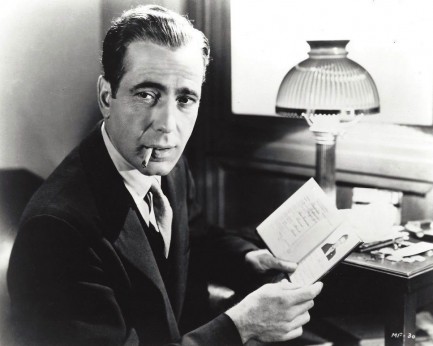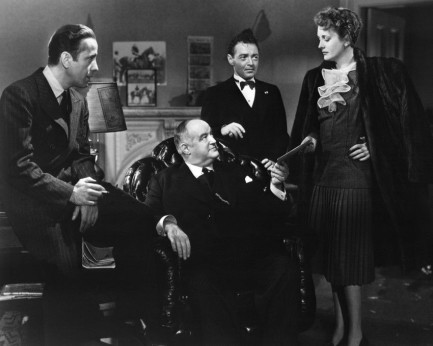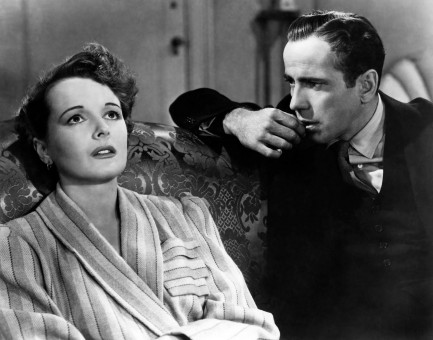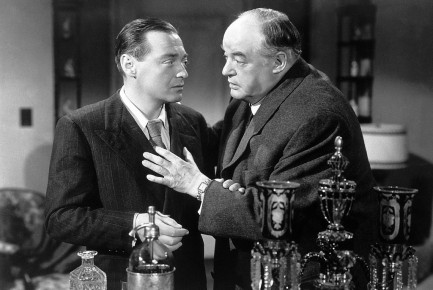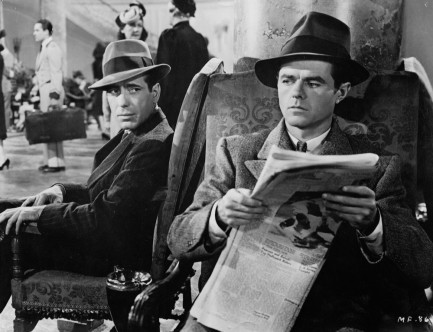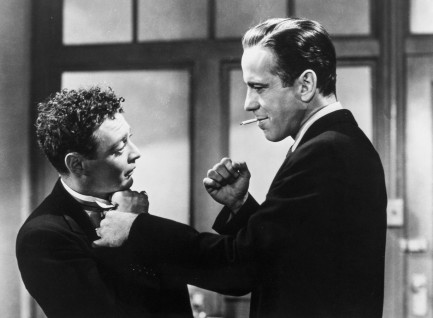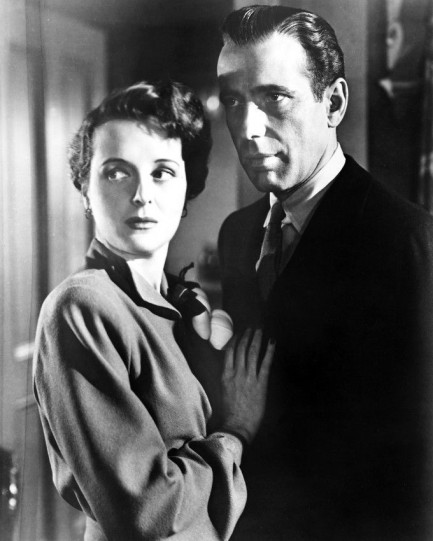 She's cold blooded. That's why she wears fur even indoors. 
Here's a menacing promo image of Joan Crawford made when she was filming her 1949 melodrama Flamingo Road. This is a crop of a larger photo in which she's taking aim at villain Sydney Greenstreet, who made the mistake of getting on her bad side. We talked about the movie recently. Shorter version: Crawford absolutely killed.
 Joan is in her sweet spot with a challenging film role. 
How do you judge a great acting performance? One way is when beforehand you look at the performer and the part and say, “Impossible, doesn't fit, can't possibly work,” then it does. Flamingo Road, which premiered in the U.S today in 1949, features Joan Crawford as a carny performer and it doesn't fit. But probably nobody would seem to fit. The main character evolves over years from carny chippie into upper crust lady, so either way a filmmaker would have to make a difficult choice—cast an ingenue who evolves into a sophisticated middle-aged woman, or cast a mature actress and hope she can play young. They chose the later option with Crawford, and it can't possibly work. But this is Crawford we're talking about—she could make most any role work, and does so here with a typically assured performance.
Flamingo Road is set in the American south and is about the social mores and political machinations of a small but wealthy town. The title refers to the enclave where the rich and powerful live together in their mansions and manors. The carny version of Crawford falls for local deputy sherrif Zachary Scott, but he's been tabbed by local kingpin Sydney Greenstreet to be his puppet in the state senate. As part of that plan Scott is to marry into wealth. Cavorting with a carny isn't going to fly. Greenstreet decides to break them up, or hurt Crawford trying, and there's nothing so underhanded or injurious that he won't do it. Crawford, though, is tougher than anyone expects, and what she learns from her travails is, first: she's going to make it to Flamingo Road no matter what it takes; and second: she will have her revenge. That's all we'll tell you about the plot.
Flamingo Road is another of those movies that's often called a film noir, and while we don't try to be gatekeepers of what is and isn't noir—because we have no authority to do so—we also don't avoid stating the obvious. Flamingo Road isn't a film noir. Some entities, including respected ones, have a vested interest in casting the noir net as widely as possible. If you host noir festivals, for example, after a while you need to expand your defintion of noir to keep your slate fresh. If you write film noir books, you might want to demonstrate that you think outside the box by including Chinatown or Lat sau san taam or The Limey (all excellent movies, by the way).
At the opposite extreme, several prominent critics attest that film noir doesn't exist at all. That's like saying there's no such thing as superhero movies because costumed heroes are just further iterations of superpowered characters such as Rambo. Superhero movies exist. So does film noir, though it resides within the wider genres of crime and drama. However, it's too easy to call any movie with conflict and a few neon-splashed night sequences a noir. Film noir is as much thematic as it is iconographic. In every way that we can discern, Flamingo Road isn't one. The definitive American Film Institute calls it a melodrama. We agree. It's a melodrama in which a good actress, aged north of forty, overcomes difficult casting to knock her years-spanning role out of the park.
            
 In Casablanca no other place compares. 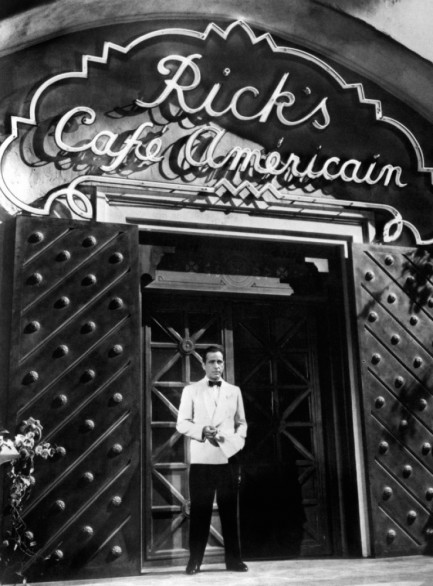
We're back in the house today—Casablanca, that is. Several days ago, on the film's Italian premiere date, we showed you some Italian posters, and today, on its U.S. premiere date, we're taking a close look at possibly the most famous fictional bar in cinema history—Rick's Café Americain. Casablanca is one of the greatest films ever made, and it's fair to say Rick's was a supporting character. Filmgoers of 1942 found themselves steeped in its otherworldly Moroccan atmosphere, as scenes were staged in its courtyard, dining room, gambling room, at its lively bar, and in Rick's roomy upstairs office and personal living quarters. We've never confirmed this, but we suspect one third of the film occurs inside Rick's Café. We have photos of every area we could find of this iconic and exotic “gin joint”—as Bogart cynically describes it—and we even turned up a blueprint.
You'd be tempted to think bars like Rick's exist only in film, but you'd be wrong. We've been to places that have exotic architecture, excellent food and drink, lively musical entertainment, well dressed international clientele, and the aura of being in the middle of a spy caper. The decadent colonial bar Abaco, located in Palma de Mallorca, comes immediately to mind, as does the supper club Meson Pansa Verde in Antigua, Guatemala, where they have live jazz in a converted wine cellar and a friend of ours once famously pushed his date into the pool. We've been to Rick's-like places in Mexico, the Caribbean, the Greek Islands, and, appropriately, Morocco, in both Fes and Marrakech (we're not fans of the Rick's that currently operates in Casablanca—same name, very diminished feel). But magical places do exist, which means even if Bogart's beloved café was never real, having those types of nights is possible. We recommend making it your mission to seek them out. clientele, and the aura of being in the middle of a spy caper. The decadent colonial bar Abaco, located in Palma de Mallorca, comes immediately to mind, as does the supper club Meson Pansa Verde in Antigua, Guatemala, where they have live jazz in a converted wine cellar and a friend of ours once famously pushed his date into the pool. We've been to Rick's-like places in Mexico, the Caribbean, the Greek Islands, and, appropriately, Morocco, in both Fes and Marrakech (we're not fans of the Rick's that currently operates in Casablanca—same name, very diminished feel). But magical places do exist, which means even if Bogart's beloved café was never real, having those types of nights is possible. We recommend making it your mission to seek them out. 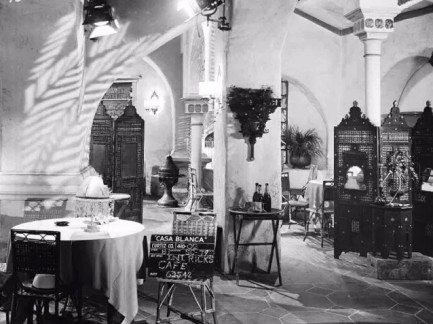 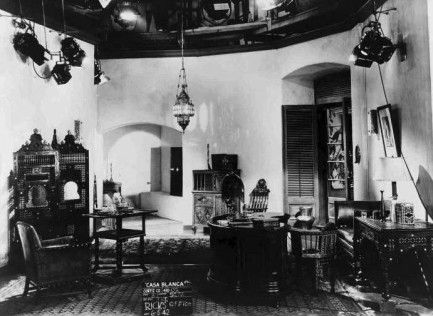 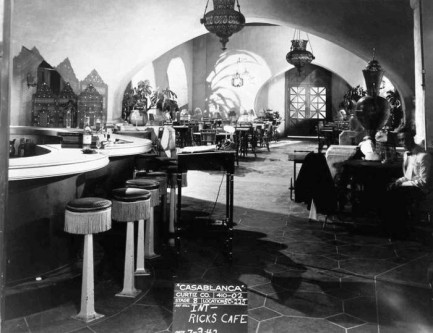  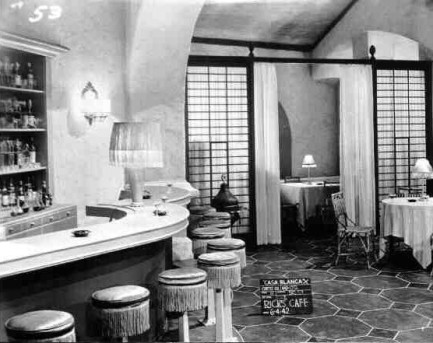 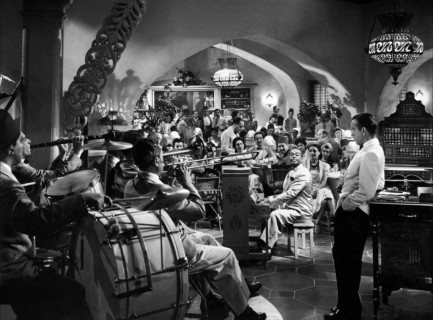 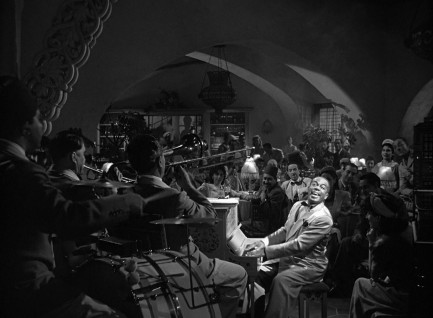 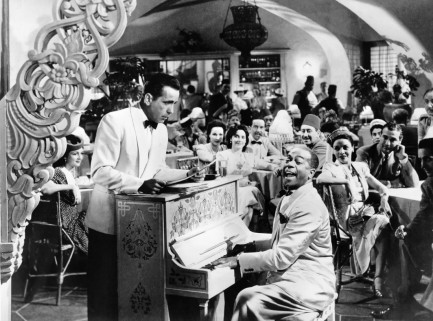 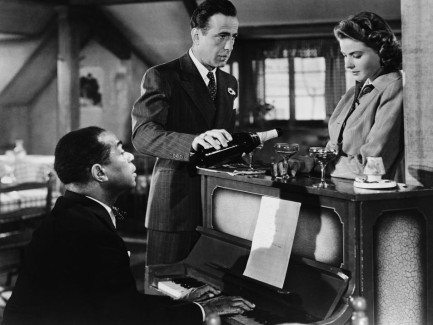 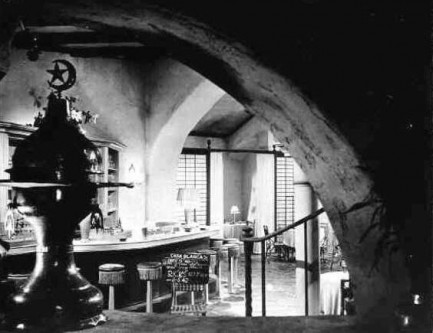 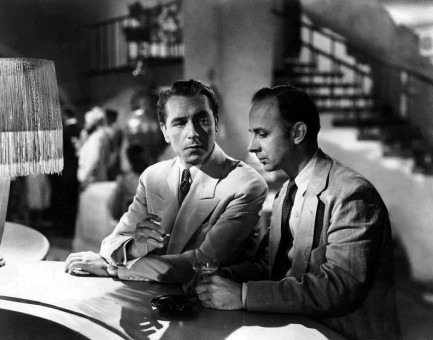 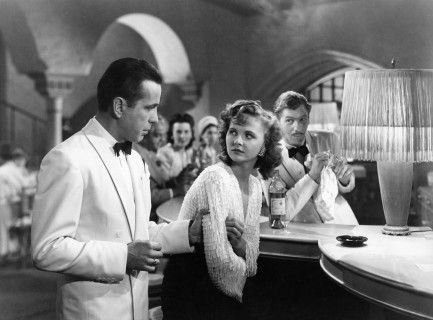 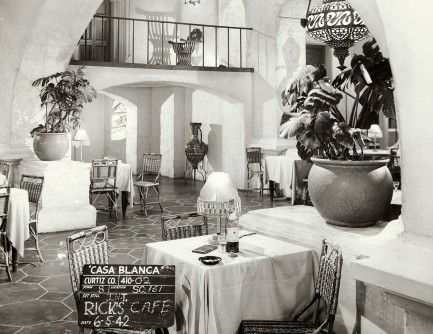 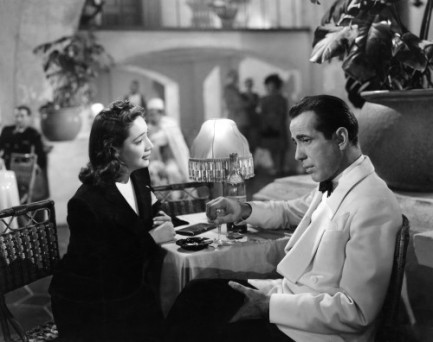 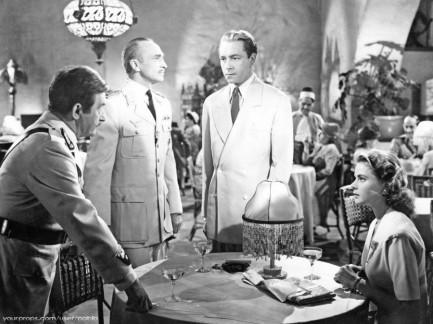 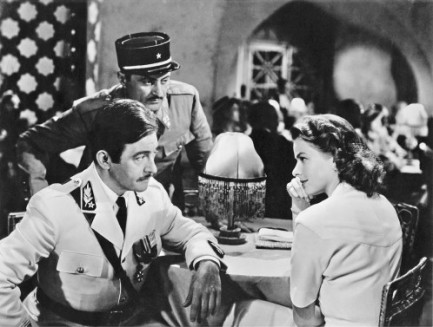 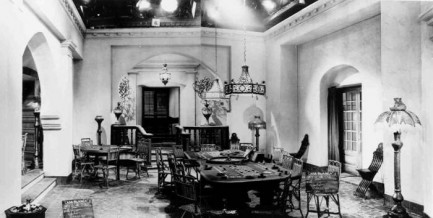 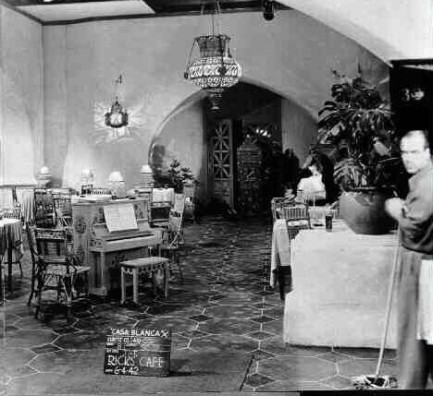 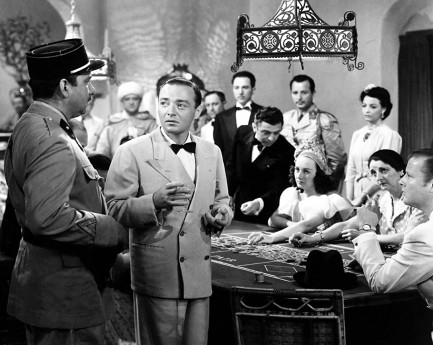 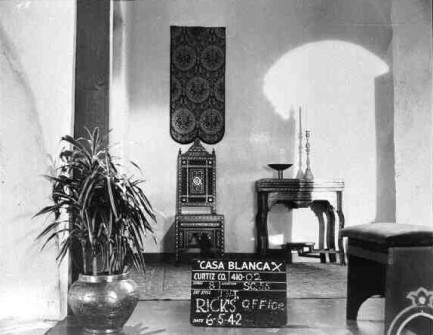  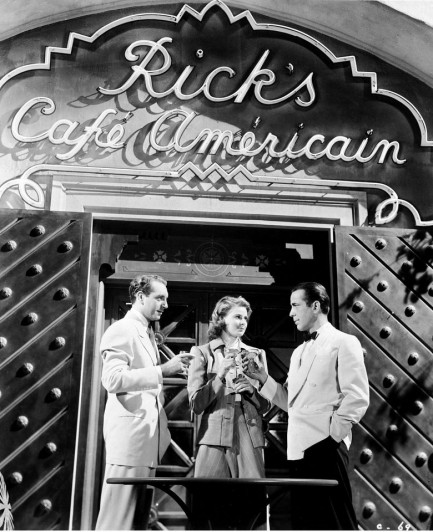
 It's mostly for his protection, but it's also for everyone else's. 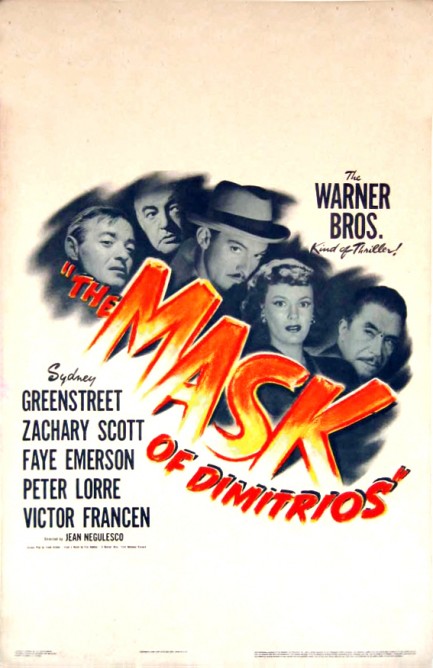
We read the novel The Mask of Dimitrios a couple of years ago, so it was a given we'd eventually talk about the movie. Starring Petter Lorre and Sydney Greenstreet, it deals with a legendary malefactor named Dimitrios Makropoulos who washes up dead on a Turkish beach and draws the interest of a novelist, who decides to research the dead man's life with an eye toward writing a thriller about it. That's a great set-up for a movie right there, and it's even cooler because everything happens in Europe. Lorre, who plays the author, traces the movements of Dimitrios the bogeyman from Istanbul, to Athens, to Sofia, and finally to Paris, seeking to illuminate the man's life and criminal career.
Flashbacks tell us how evil Dimitrios was. Nothing was beyond him—theft, blackmail, political crimes, murder. We're talking irredeemable badness, a virus, a plague. Lorre and Greenstreet cross paths and decide to unravel the Dimitrios mystery together. Its solution offers the possibility of financial reward—one million francs. Lorre is less interested in those than a story he can turn into a great novel, but money up front never hurts. Unless it gets you killed. But while the flashbacks offer crucial exposition, they also shift focus from the film's two unique leads, and in so doing sap the narrative of momentum. They could have been shorter. More screen time for Lorre and Greenstreet would have been the benefit.
The Mask of Dimitrios is classified as a film noir on many websites, but as a drama on AFI.com, which is where we go for genre clarity because crowd sourced sites like Wikipedia and IMDB cast an excessively wide net with their categorizations. Some readers may disagree about whether this particular film is a noir, but what's true is it doesn't have a large number of the usual noir gimmicks, save for those interminable flashbacks, and occasional clever work with shadows. It almost entirely lacks other forms of noir iconography, and particularly lacks the key element of a disaffected central character or character that's screwed and gets more screwed as the plot progresses. On the other hand most of the players are shady and/or amoral.
We know what you're thinking. We aren't a pure pulp site, so how can we be purists about film noir? We're not. We tell you right in the “About Us” section that we're expanding the idea of pulp just for our personal pleasure, not trying to convince readers to redefine it in defiance of what is understood to be pure pulp. Going into The Mask of Dimitrios expecting film noir might lead to disappointment for noir fans, so we're just letting you know where the movie stands. It has its charms, regardless, but overall it's decent, not good, and certainly falls short of being excellent. Even so, watching old crime movies is incredibly satisfying, even when they aren't top notch. The Mask of Dimitrios premiered in today in 1944.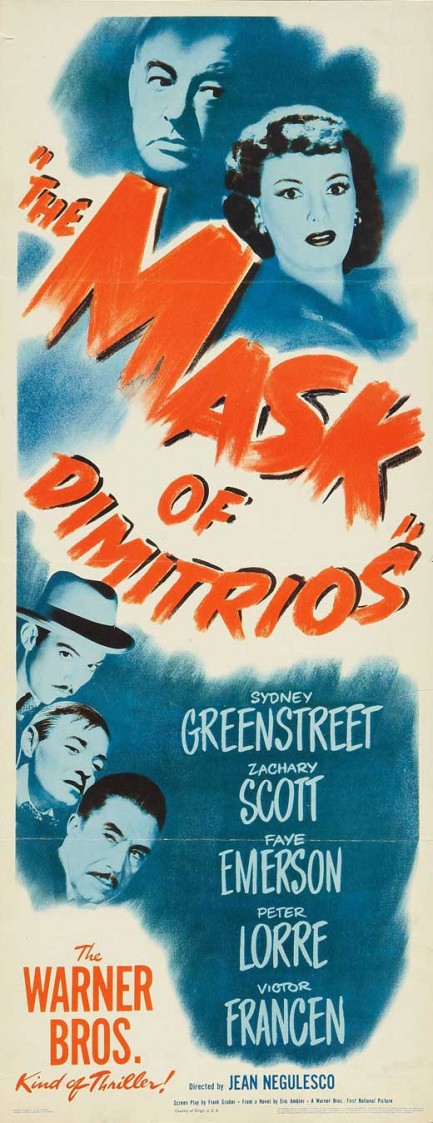 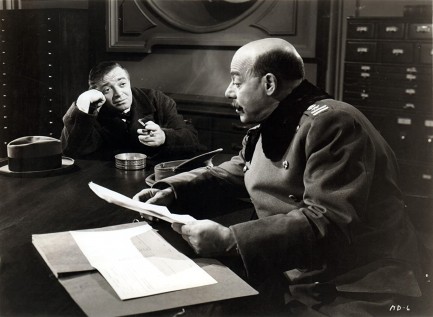 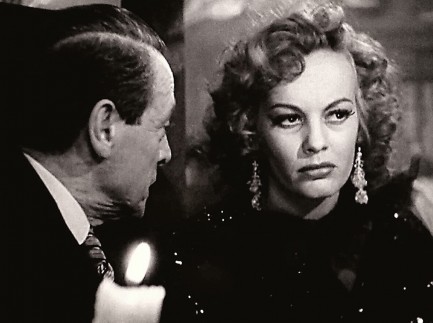 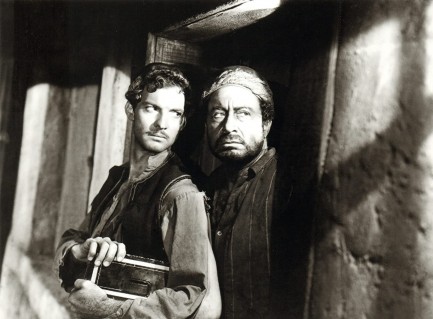 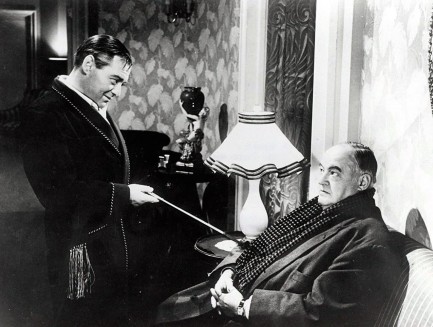 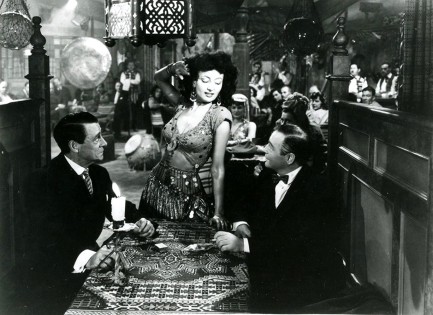 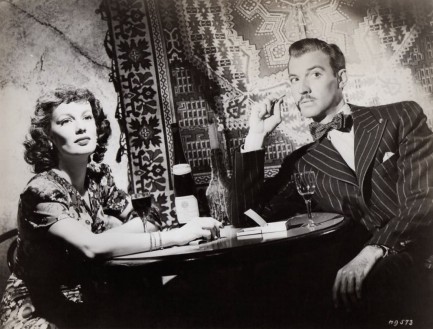  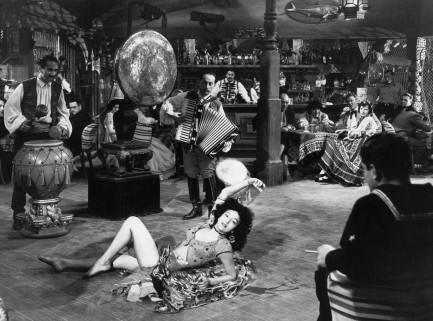 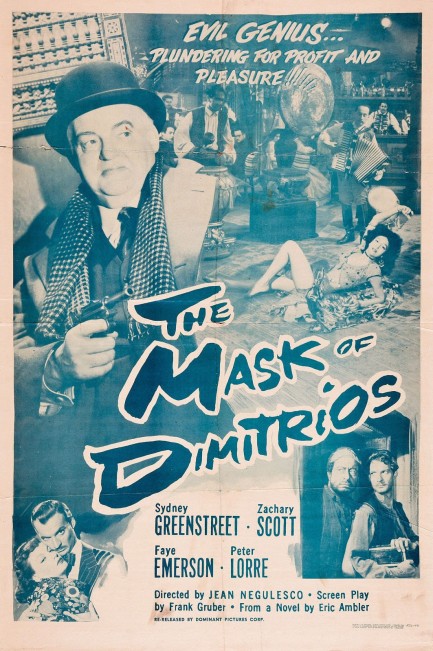
 Divorce probably would have been the easier option. 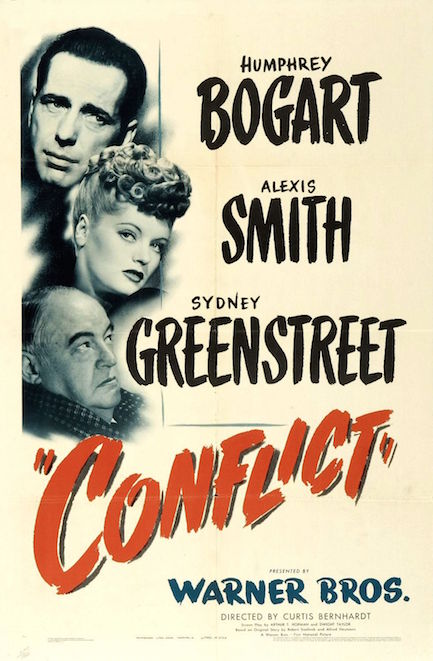
Conflict was Humphrey Bogart's follow-up to the crowd pleasing To Have and Have Not, and he takes a dark turn as a man whose bad marriage is complicated by the fact that he's fallen in love with his sister-in-law. He's willing to kill to be free, but his plan goes sideways, as they always do. We won't go into detail except to note that, interestingly, Bogart begins to see the same jumbled pyramidal shape everywhere—in a pile of fallen logs, in an architectural drawing, in the kindling set up to start a bonfire, etc. It's a Hitchcockian touch designed to symbolize the inner conflict of the title, but why exactly is he seeing these things? Is it because he killed his wife? Or because he botched his opportunity and now she's trying to drive him insane? We won't tell you. We'll only say that the winding road toward a resolution is reasonably entertaining, and Bogart can pull even a flawed film to the positive side of the ledger. Conflict, which co-starred Alexis Smith and Sydney Greenstreet, premiered in the U.S. today in 1945.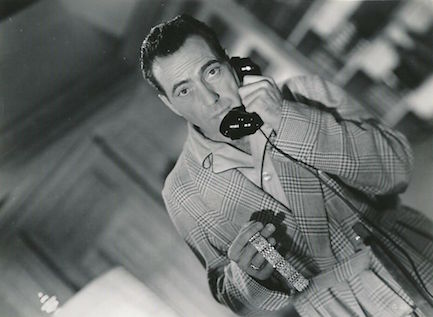  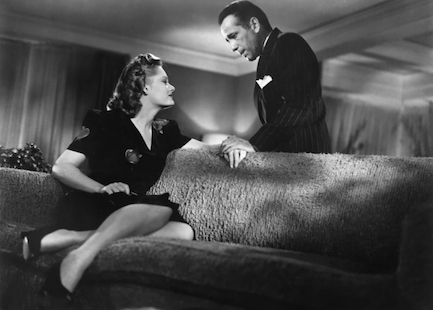 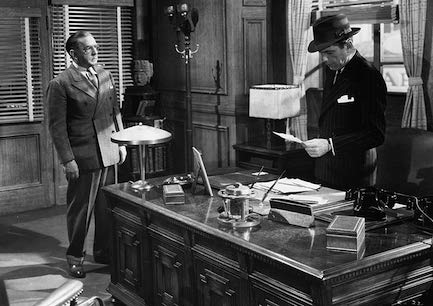 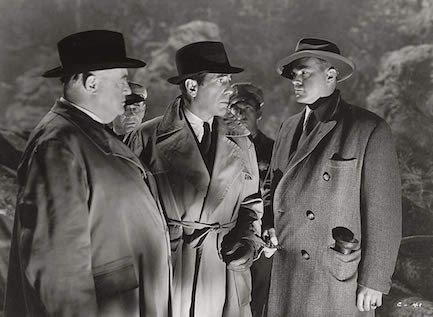 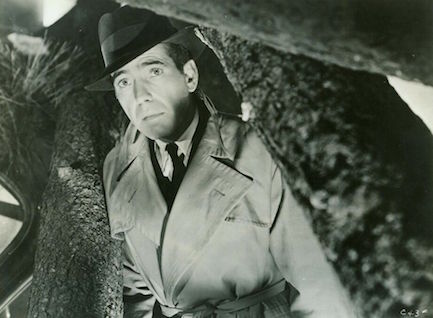 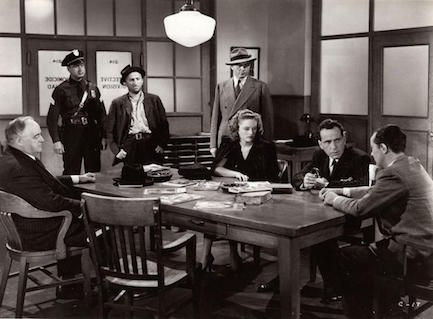 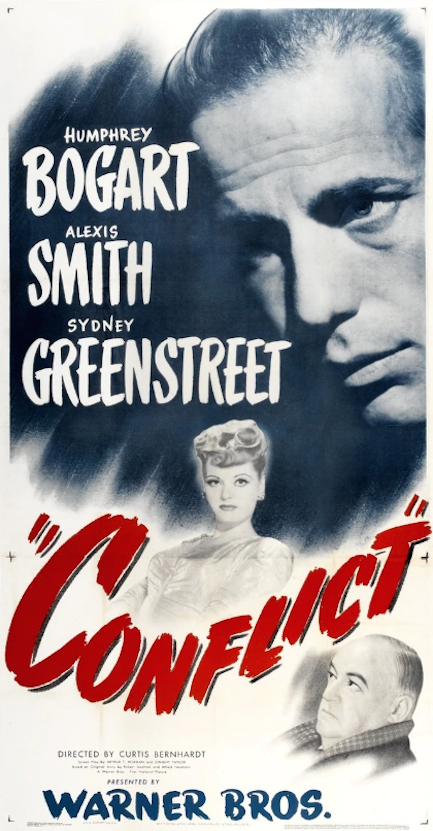
 A stranger in strange lands comes to know pure evil. 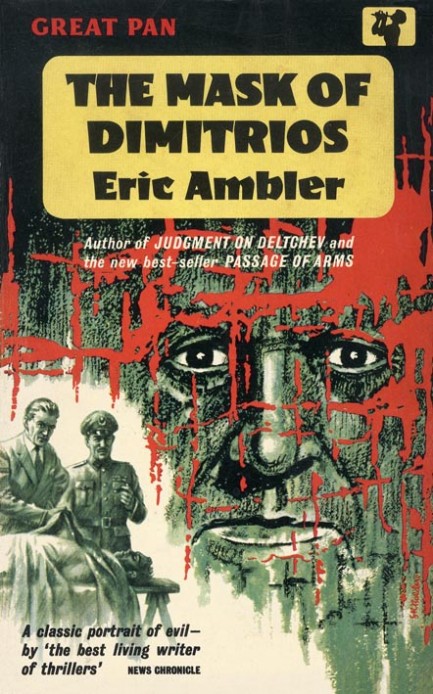
Because Eric Ambler's 1939 thriller The Mask of Dimitrios is the source of the 1944 film noir of the same name starring Peter Lorre and Sydney Greenstreet, we should have read it long ago, but better late than never. The book tells the story of a writer in Istanbul who becomes interested in a killer, smuggler, slaver, and political agitator known as Dimitrios Makropoulos. In hopes of finding inspiration the writer begins to piece together the life of this mystery man.
The investigation carries him from Istanbul to Sofia to Geneva and beyond. That sounds exotic, but the story is almost entirely driven by external and internal dialogues, with little effort spent bringing alive its far flung locales. While we see that as a missed opportunity, and the book could be shorter considering so much of the aforementioned dialogue fails to further illuminate matters, it's fascinating how Dimitrios is slowly pieced together. Here's a line to remember, as the main character Latimer reflects upon the modern age and what the world is becoming:
“The logic of Michelangelo's David and Beethoven's quartets and Einstein's physics had been replaced by that of The Stock Exchange Yearbook and Hitler's Mein Kampf.”
That isn't one you'd soon forget. Ambler sees casino capitalism and Nazism as twin signposts on a road to perdition built by people like Dimitrios. We can't even imagine that being written by a popular author today without controversy, but Ambler, writing in England during the late 1930s, had zero trouble identifying exactly what he was looking at. This Great Pan edition of The Mask of Dimitrios appeared many years later in 1961, and it has unusual but effective cover art from S. R. Boldero.
 Passage to Marseille has plenty of message but not enough movie. 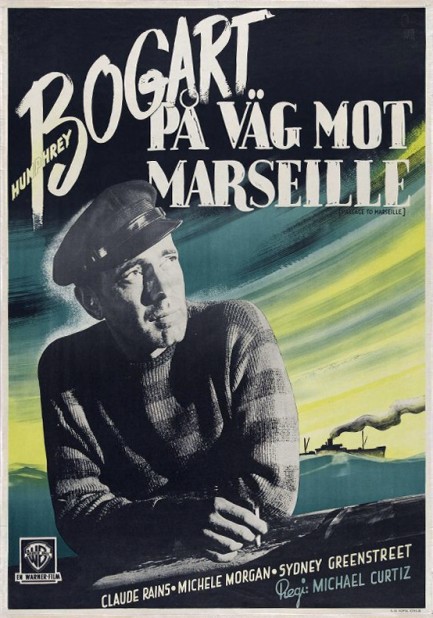
We’ve seen nearly every Humphrey Bogart movie but had been warned away from Passage to Marseille. We finally watched it last night and the haters were right—it’s substantially below standard. You have Casablanca director Michael Curtiz at the helm and Casablanca alumni Bogart, Claude Rains, Peter Lorre, and Sydney Greenstreet in front of the camera, along with the lovely Michèle Morgan in the female lead, but all their combined efforts cannot elevate this clumsily written propaganda piece. Curtiz is not to blame—his direction is functional and James Wong Howe photographs everything beautifully. Likewise, Bogart manages his role adequately, Lorre and his emotive brow are put to ample use, and Rains dons an eyepatch and permafrown to bring some gravity to matters. But Passage to Marseille is just a badly written film. Where Casablanca used patriotic sentiments adroitly (who can forget the way the singing of the French national anthem “La Marseillaise” both roused the audience and advanced the plot?), Passage to Marseille flounders under the weight of cheap nationalism and sticky sentiment. It enjoys a decent rating on many review websites but we daresay that’s mainly due to Bogart bias (wherein even his bad flicks like Chain Lightning and Battle Circus have good ratings). We love the guy too, but no actor in history has batted 1.000, and this movie was a clean whiff. As propaganda it doubtless got the job done, but as a film we suggest consigning it to a dusty, unreachable shelf. Passage to Marseille premiered in Sweden as På väg mot Marseille today in 1944. 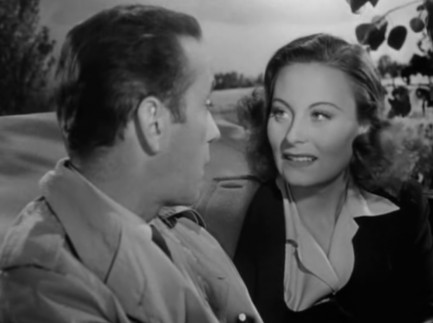 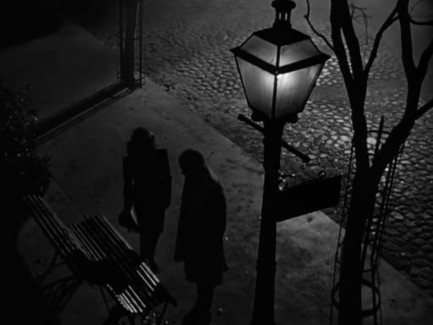 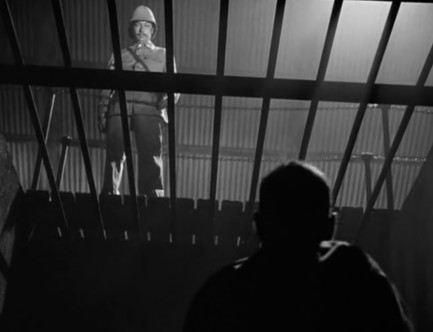 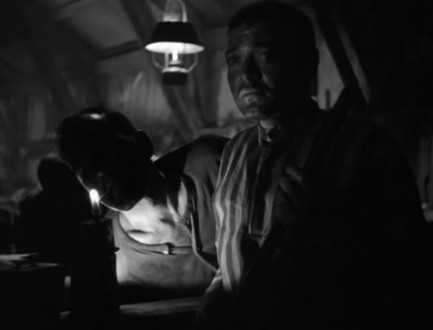 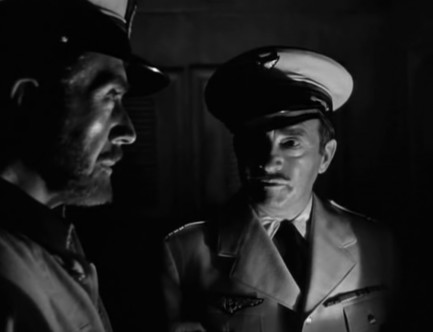
 Black bird singing in the dead of night. 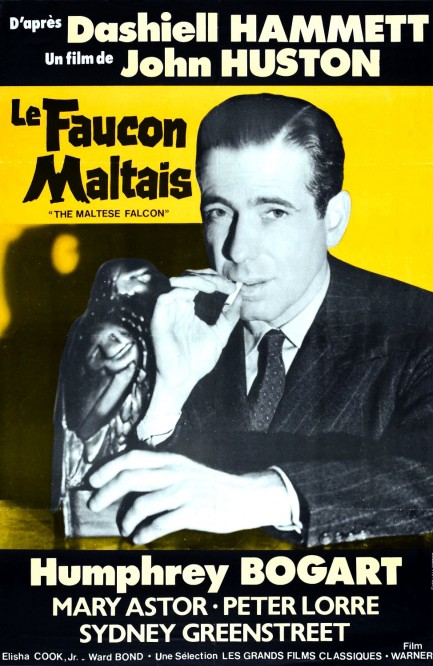 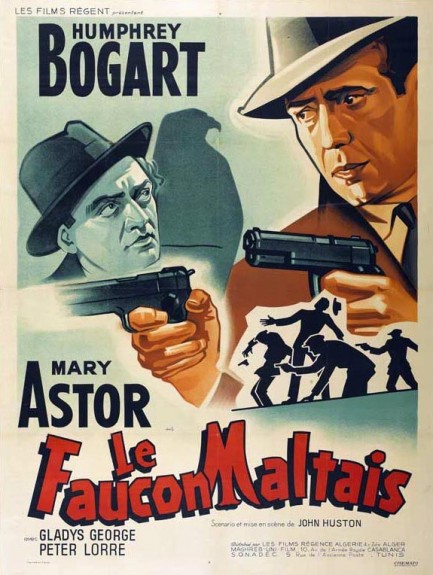
Above are two French posters for one of our favorite movies, The Maltese Falcon. Dashiell Hammett’s novel was originally adapted in 1931 by Roy Del Ruth with Bebe Daniels and Ricardo Cortez in the leads. Though that version was good, John Huston and Warner Brothers Studios chose to remake the film in 1941 and hit the jackpot pairing Humphrey Bogart and Mary Astor as Sam Spade and Brigid O’Shaugnessey. With Peter Lorre, Sydney Greenstreet and Elisha Cook, Jr. in supporting roles, the film was loaded with top talent and is considered the first film noir. If you haven’t seen it, rent it. And if you like it, rent the 1931 version too—the contrast is striking. Le faucon Maltais opened in Paris today in 1946.
|
 |

The headlines that mattered yesteryear.
2003—Hope Dies
Film legend Bob Hope dies of pneumonia two months after celebrating his 100th birthday. 1945—Churchill Given the Sack
In spite of admiring Winston Churchill as a great wartime leader, Britons elect
Clement Attlee the nation's new prime minister in a sweeping victory for the Labour Party over the Conservatives. 1952—Evita Peron Dies
Eva Duarte de Peron, aka Evita, wife of the president of the Argentine Republic, dies from cancer at age 33. Evita had brought the working classes into a position of political power never witnessed before, but was hated by the nation's powerful military class. She is lain to rest in Milan, Italy in a secret grave under a nun's name, but is eventually returned to Argentina for reburial beside her husband in 1974. 1943—Mussolini Calls It Quits
Italian dictator Benito Mussolini steps down as head of the armed forces and the government. It soon becomes clear that Il Duce did not relinquish power voluntarily, but was forced to resign after former Fascist colleagues turned against him. He is later installed by Germany as leader of the Italian Social Republic in the north of the country, but is killed by partisans in 1945.
|

|
|

It's easy. We have an uploader that makes it a snap. Use it to submit your art, text, header, and subhead. Your post can be funny, serious, or anything in between, as long as it's vintage pulp. You'll get a byline and experience the fleeting pride of free authorship. We'll edit your post for typos, but the rest is up to you. Click here to give us your best shot.

|
|



















 clientele, and the aura of being in the middle of a spy caper. The decadent colonial bar Abaco, located in Palma de Mallorca, comes immediately to mind, as does the supper club Meson Pansa Verde in Antigua, Guatemala, where they have live jazz in a converted wine cellar and a friend of ours once famously pushed his date into the pool. We've been to Rick's-like places in Mexico, the Caribbean, the Greek Islands, and, appropriately, Morocco, in both Fes and Marrakech (we're not fans of the Rick's that currently operates in Casablanca—same name, very diminished feel). But magical places do exist, which means even if Bogart's beloved café was never real, having those types of nights is possible. We recommend making it your mission to seek them out.
clientele, and the aura of being in the middle of a spy caper. The decadent colonial bar Abaco, located in Palma de Mallorca, comes immediately to mind, as does the supper club Meson Pansa Verde in Antigua, Guatemala, where they have live jazz in a converted wine cellar and a friend of ours once famously pushed his date into the pool. We've been to Rick's-like places in Mexico, the Caribbean, the Greek Islands, and, appropriately, Morocco, in both Fes and Marrakech (we're not fans of the Rick's that currently operates in Casablanca—same name, very diminished feel). But magical places do exist, which means even if Bogart's beloved café was never real, having those types of nights is possible. We recommend making it your mission to seek them out.














































